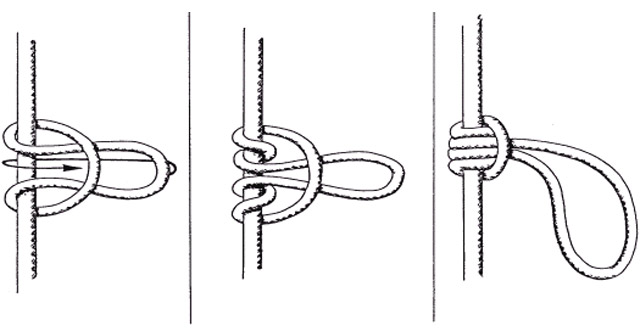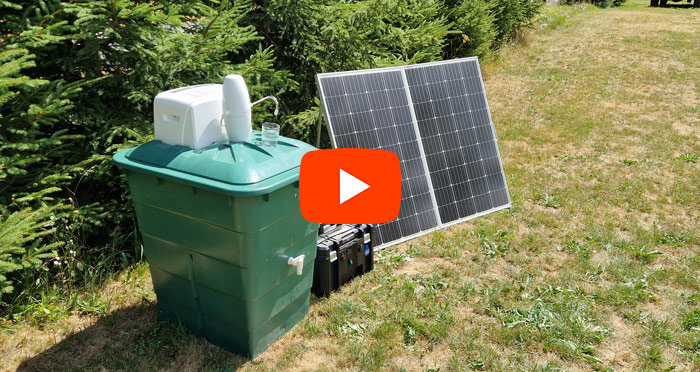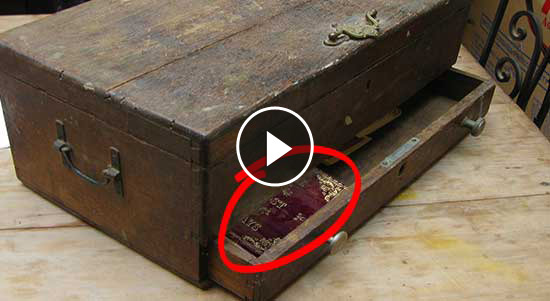Click Here To Join Our Telegram Channel for FREE daily tutorials!

Knot-tying is an essential skill that any prepper or survivalist should master, with no exception. After all, having a rope or a paracord with you is of no use if you can’t tie a proper knot. And I’m not talking about the knots we were taught as kids when we were trying to tie our shoes. There are hundreds of knots and each one is useful in a specific situation, but there are 5 particular knots that will help you most in a survival situation.
If you master these 5 knots, you’ll be able to manage rope and paracord like a pro, in any survival situation. They’re not complicated at all, you don’t have to be a marine or army veteran to get them right. With a little bit of practice, you’ll be making these knots in no time. All you need to do is follow a few simple instructions (you can even print them and take them with you, if you want to).
#1: Figure Eight On a Bight Knot

You can print the picture above and put it in your bug-out bag if it’s easier for you. Although this knot is so simple, you’ll remember the steps without any effort:
Steps 1, 2, & 3: Grab a bite of rope and form the classic figure eight.
Step 4: Pull tight and clip in. Fast, simple and secure.
That’s it. Anyone could make this knot, from a 10-year-old to a senior with arthritis. And the benefits of this knot do not stop at its simplicity. You’ll be amazed to hear that it preserves 85% strength of the rope, so it’s a good, solid AND easy knot anyone can make in an emergency situation.
#2: Figure Eight Follow Through Knot

This is a bit more complicated than the one above, but it follows the same principle. It’s usually used for tying two ropes together. It may take you a bit of practice at first, but don’t worry, you’ll figure it out before you can say “Figure Eight Follow-Through Knot”.
Here are the step-by-step instructions:
Step 1: Form a single figure eight at the end of the rope and feed the tail through your harness. Some harnesses require that you feed the rope through certain straps. When tying in, I like to feed rope through the same harness straps that the belay loop occupies (not pictured), others prefer to use the belay loop (as pictured). Still, others prefer to tie into a steel locking carabiner, or two aluminium locking carabiners, gates reversed, which have been clipped into the appropriate harness straps. There are pros & cons. Consult your harness manual for the recommended tie-in point.
Steps 2 & 3: Rethread the figure eight, following the same path as the first. Pull the knot tight (though some climbers prefer to leave it a little loose to absorb force from a fall). Make sure you have enough tail, as the knot will slip a bit when loaded. Check the knot by counting “two”, “two” & “two”, for the three visible doubled strands. Ensure they each are lying flat and not crossing over themselves.
Step 4: An optional step. If you find yourself with too much tail, or are paranoid about the figure eight slipping, tie a stopper knot with the remaining tail.
It is recommended that you check your partner’s tie-in knot, and get them to check yours before climbing.
#3: Two Half Hitches

This knot helps you tie the paracord to any tree or pole securely. So if you need to climb down a cliff to rescue someone or to get food or if you want to tie secure something to a tree, this is the knot you’ll need.
Here‘s what you’ve got to do:
Step 1: Wrap around the standing end to make the first Half Hitch.
Step 2: Wrap around the line in the same direction again to make the second Half Hitch.
Step 3: Pull it tight.
Congrats, you’re done with Two Half Hitches. Now, for extra insurance, you can tie an Overhand knot in the free end of the line to keep the Two Half Hitches from slipping. Which brings me to the next knot:
#4: Overhand Knot (aka Transport Knot/Mule Knot)
 source: www.wilderness-survival.net
source: www.wilderness-survival.net
This one is used for securing the transport tightening system and it goes like this:
Step 1. Pass the running end of the rope around the anchor point passing it back under the standing portion (leading to the far side anchor) forming a loop.
Step 2. Form a bight with the running end of the rope. Pass over the standing portion and down through the loop and dress it down toward the anchor point.
Step 3. Secure the knot by tying a half hitch around the standing portion with the bight.
And here are some checkpoints, to make it all even easier for you:
Checkpoint 1: There is a single overhand slip knot.
Checkpoint 2: The knot is secured using a half hitch on a bight.
Checkpoint 3: The bight is a minimum of 12 inches long.
I’ve got one more crucial knot for you:
#5: The Bowline
 source: www.outdoors.org
source: www.outdoors.org
It’s as simple as it gets. In fact, it’s child’s play: “The bunny comes out of the hole, runs around the tree, and goes back in the hole”. This actually makes it easier to remember, but I’m going to give you the “adult” instructions as well:
Step 1: Take one end of your rope and pass it behind a tree or rock (or simply bend it to create a loop)
On one side of the loop, you will now have a short end (the “working” end) and a longer piece (the “standing” end). The working end usually needs to be about a foot long, but can be longer if you want a larger loop.
Step 2: Create a small circle in the standing end of the rope by pinching the rope and folding it down about three inches.
Step 3: Run the working end of the rope through the loop from back to front.
Step 4: Run the working end of the rope around the standing end. 5 and 6. Run the working end through the loop, from front to back and pull the knot tight.
If you want to add knots to the list, be my guest. The list is open and it’s waiting for your completion. You can never learn enough about survival, so any input is most welcome. Don’t forget to stay safe and well informed!
This Crazy Off Grid Device Literally Makes Drinkable Water From Fresh Air:
According to NASA, the U.S. is expecting a 100-YEAR LONG MEGADROUGHT.
It's already begun. Ask the farmers in California. They know.
Every survivalist knows that water is of critical importance. You NEED an independent water source that you can count on!
As an interesting "survival rehearsal" - imagine that you turned the tap on right now and nothing came out. How long would you last?
But what if there was another water source literally hidden in plain sight. That's right, I'm talking about the atmosphere!
The amazing thing about getting water from the natural moisture in the air... is that it is ALWAYS available.
This gives you real water security!
Learn more about how to tap into "Nature's secret water reservoir" and stay hydrated when TSHTF!
Watch the video:
😳 What Tinnitus Does To Your Brain Cells (And How To Stop It)
After 47 years of studies and countless brain scans done on more than 2,400 tinnitus patients, scientists at the MIT Institute found that in a shocking 96% of cases, tinnitus was actually shrinking their brain cells.
As it turns out, tinnitus and brain health are strongly linked.
Even more interesting: The reason why top army officials are not deaf after decades of hearing machine guns, bombs going off and helicopter noises…
Is because they are using something called "the wire method", a simple protocol inspired by a classified surgery on deaf people from the 1950s...

I Can't Help Showing This Off:
If you haven't heard of Claude Davis yet do yourself a huge favor and watch this video.
One of the smartest guys I ever had the pleasure of meeting, Claude set-up a unique prepping system that changed his life forever.
I already tried it myself and let me tell... you I was completely blown away... His surprising tactics could make your life easier and give you the peace of mind you deserve.
Don't just take my word for it... watch his short video and decide for yourself.

Most People Don't Have The Guts To Try This:
An amazing discovery in an abandoned house in Austin, Texas: A lost book of amazing survival knowledge, believed to have been long vanished to history, has been found in a dusty drawer in the house which belonged to a guy named Claude Davis.
Remember... back in those days, there was no electricity... no refrigerators... no law enforcement... and certainly no grocery store or supermarkets... Some of these exceptional skills are hundreds of years of old and they were learned the hard way by the early pioneers.
>> Click here to find out about them now
We've lost to history so much survival knowledge that we've become clueless compared to what our great grandfathers did or built on a daily basis to sustain their families.
Neighbors said that for the last couple of years Claude has tried to unearth and learn the forgotten ways of our great-grandparents and claimed to have found a secret of gargantuan proportions. A secret that he is about to reveal together with 3 old teachings that will change everything you think you know about preparedness:
>>> Click Here To Watch His Short Video <<<

More Off-Grid And Survival Resources:

What REALLY Happens When You Bury a Shipping Container? (Hint: It's A Bit Crazy...)
Shipping containers are all the rage - but if you are thinking about buying one, you MUST watch this video first:
There's a general belief that if you bury a shipping container you can create an awesome root cellar / storm shelter / survival bunker.
But is a shipping container strong enough to handle the pressure?
Watch the video to see what happens:
What Really Happens When You Bury a Shipping Container? (Click To Watch Video)










Good advice from the scoutmaster. I use the taut-line hitch more than any other knot because it allows you to tighten up your line.
Your Two Half Hitches could useful be replaced by the Round Turn and Two Half Hitches. Take the line two full turns around the anchor point before tying off the half hitches. It’s much stronger and safer. Also, even though my knot would hold me, I wouldn’t want to trust my weight to paracord, let alone mine and a rescued person’s combined weight.
Very interesting, refreshing,skills and tools to train one self…